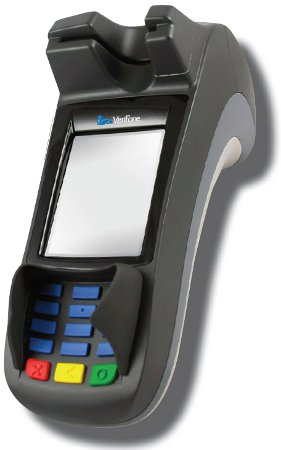Linux-based payment device features NFC, color touchscreen
Oct 28, 2011 — by Eric Brown — from the LinuxDevices Archive — 9 viewsVeriFone Systems announced an Linux-based Point of Sale (POS) payment device that integrates a near field communication (NFC) contactless reader. The H5000 runs Linux on an ARM11 processor, offers a 3.5-inch color touchscreen, and supports multiple payment types– including legacy magnetic stripe, EMV smartcards, and contactless cards — with a single hybrid card slot, says the company.
VeriFone, which has previously offered Linux-based payment devices such as the MX870, says its new H5000 will be initially aimed at the German market. The device is said to be a successor to the Hypercom Artema Hybrid, which became part of the product line when VeriFone completed its acquisition of Hypercom on Aug. 4.
An ABI study of the PoS market released in August listed VeriFone, Hypercom, and Ingenico as the world's three leading vendors of POS terminals. Like Verifone, Hypercom was involved in the Google Wallet initiative, which uses near field communication (NFC) radios in Android phones and POS equipment to implement contactless mobile payments.

VeriFone H5000
(Click to enlarge)
Unlike the Artema Hybrid, the H5000 (above) includes an NFC radio along with other contactless options such as Mifare. The device features a single card reader that supports both magnetic stripe and EMV (EuroPay, MasterCard, and Visa) chip-card transactions, says the company.
Running Linux on an ARM11 processor clocked to 266MHz, or optionally 400MHz, the H5000 is equipped with 256MB of DDR RAM, with an option to move up to 512MB, says VeriFone. The system also provides 512KB of SRAM backup, with 1MB optional, as well as 256MB of flash memory, with an option to move to 512MB, says the company.
The all-in-one solution measures 10.8 x 4.9 x 3.5 inches (275 x 125 x 90mm), and features a rubberized surface, says VeriFone. The device is said to incorporate a 3×5 PIN pad with an integrated privacy shield and optional backlighting. There's also a 3.5-inch, resistive, backlit color touchscreen, as well as an optional 384-dot, 57mm-wide thermal printer.
The H5000 is equipped with an Ethernet port, an RS232 port, and a USB host port, says VeriFone. The device ships standard with 802.11b/g/n Wi-Fi, and offers Bluetooth and GPRS as options, says the company. ISDN analog modem or ISDN PSTN is said to be available for dial-up.
The H5000 is equipped with DES and triple-DES encryption, and supports operating temperatures from 0 to 45 deg. C (32 to 115 deg. F), says the company. The device is said to support both AC and DC power input.
PAYware TCS
The H5000 can be bought as a stand-alone system, or can be purchased together with VeriFone's PAYware TCS central management system. PAYware TCS is touted for offering better control over payment device "estate," while making it easier to adapt to various international standards and newer payment technologies, including NFC-based value added services.
With the Linux operating system in both the H5000 and PAYware TCS, developers can "create value-added applications for new and existing merchants quickly," says VeriFone. The device is said to ship with icon-based GUI apps, although no images of the interface were available.
Stated Adam Biedrzycki, VeriFone vice president, Central Europe, "The system delivers the fastest transaction time in the German market, accelerating the check out process in multiple environments, including multi-lane configuration, as a stand-alone device or connected to a cash register system."
Availability
Early availability for the H5000 is scheduled for the first calendar quarter of 2012, with general availability expected in the second quarter, says VeriFone. The primary market appears to be Germany. More information may be found on VeriFone's H5000 product page.
This article was originally published on LinuxDevices.com and has been donated to the open source community by QuinStreet Inc. Please visit LinuxToday.com for up-to-date news and articles about Linux and open source.